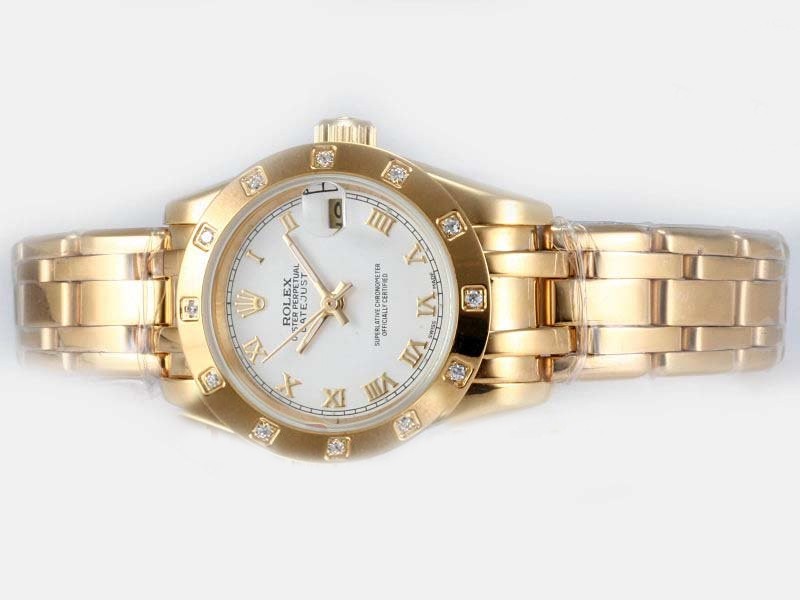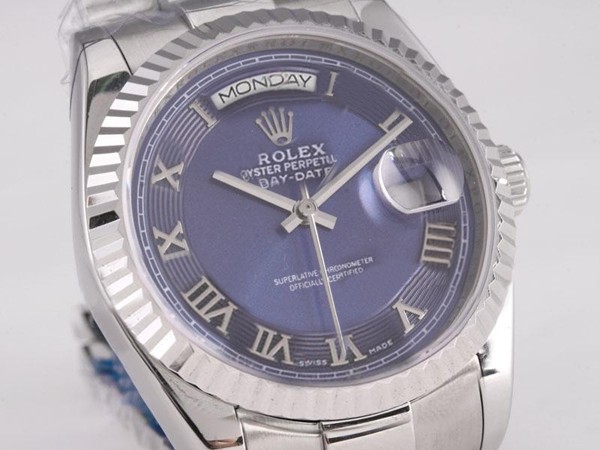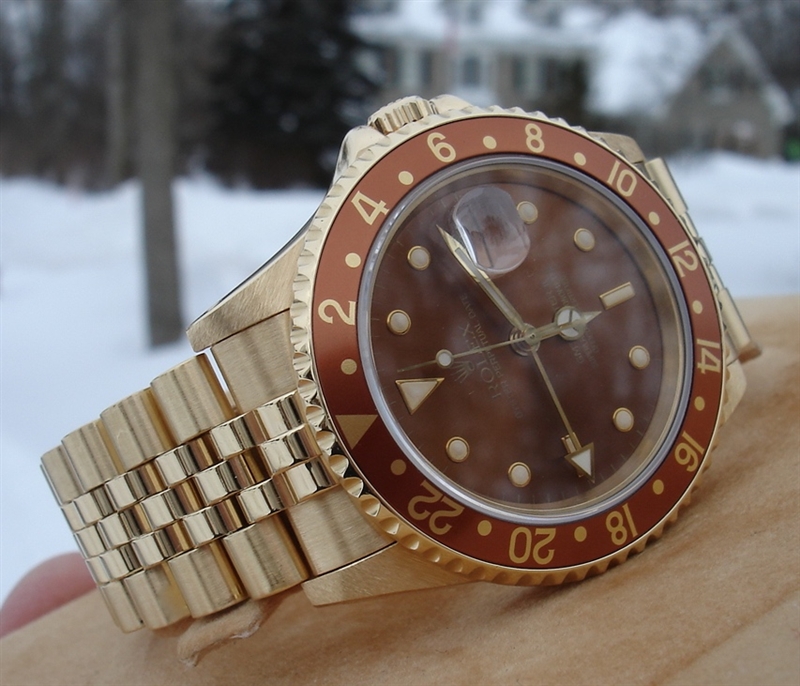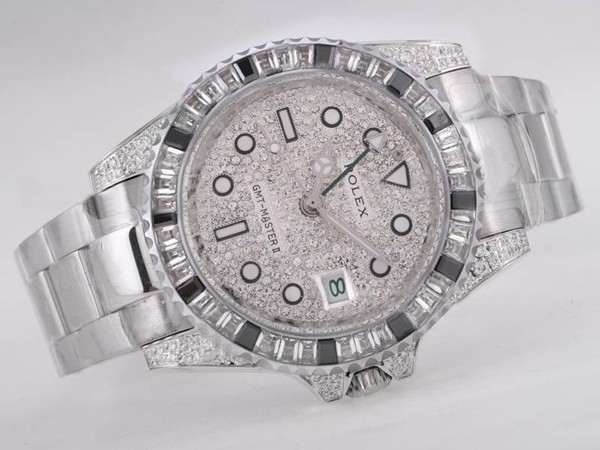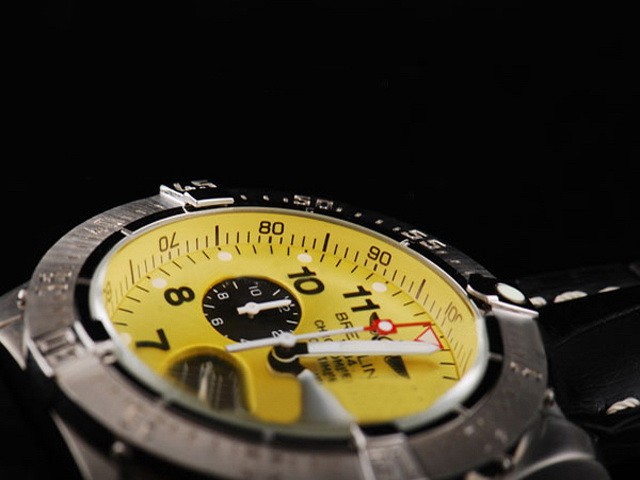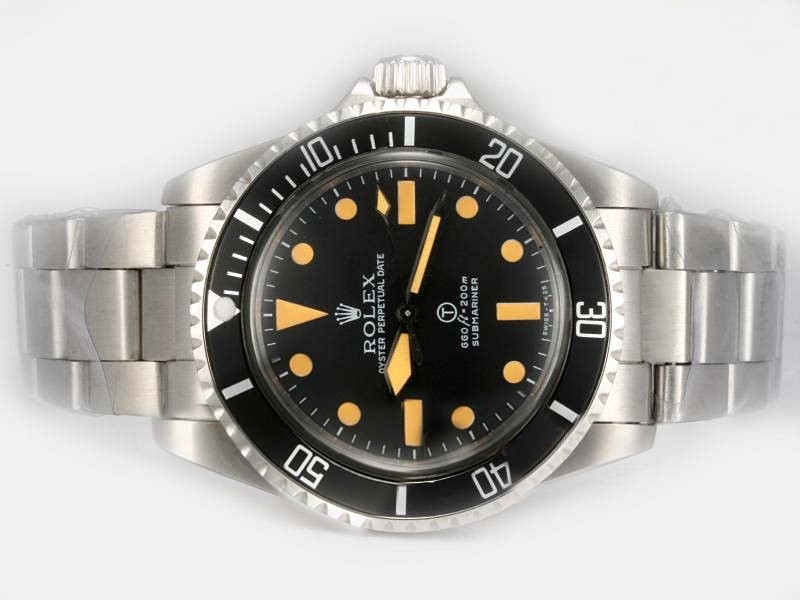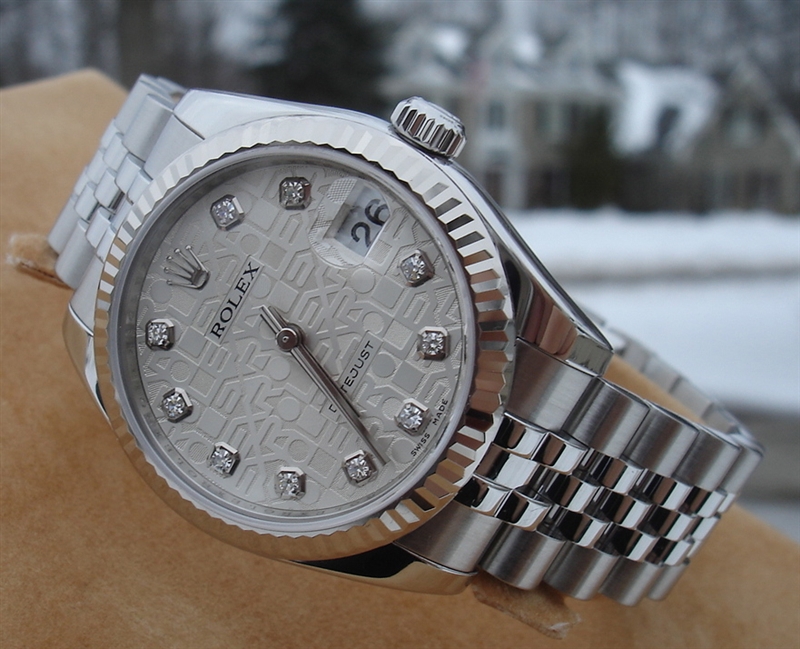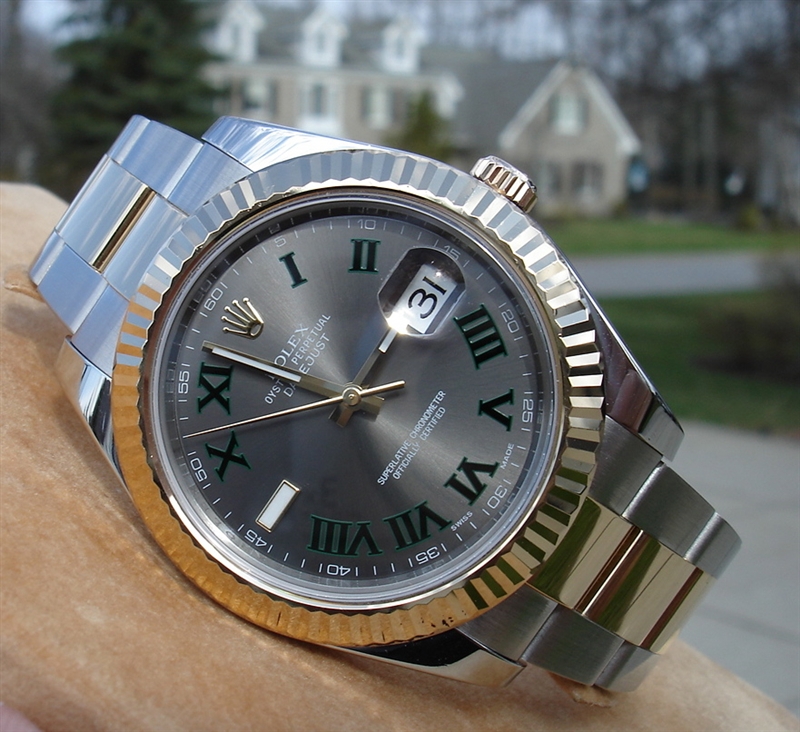A lot of collectors look down at their Rolex watches and see what seems to be a tiny Mercedes-Benz logo sitting near the tip of the hour hand. This feature, now a ubiquitous characteristic found on countless models from a myriad of different manufacturers, first made an appearance on Rolex sports watches during the mid-1950s. These days, this style of handset is universally referred to as “Mercedes-style” hands, but why do fake Rolex watches use Mercedes hands and more importantly, what does it mean?
The emblem of Mercedes-Benz, the internationally renowned luxury automotive manufacturer, is easily among the most famous company logos in existence, and examples of it can be found scattered throughout virtually every corner of the globe. The actual Mercedes-Benz logo is a three-pointed star, with each point representing a distinguished way of transportation: land, sea, and air. 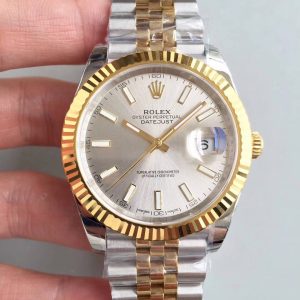
However, Mercedes style hands can be found on certain Rolex watches that pre-date the release of the GMT-Master, and while there is always the possibility that the “air” environment is represented by the early Rolex watches that were worn by pilots during WWII, it is rather unlikely that this is the explanation for the Mercedes-style hour hand on Rolex sports watches.
Rolex used Mercedes Gleitze’s attempt of the English Channel as the center of an advertising campaign that showcased the superior water-resistance of its Oyster case. At the time, many watch manufacturers made claims about water resistance; however, Gleitze’s swim provided the public with well-documented and irrefutable proof of the fake Rolex Oyster case’s ability to fully protect against water intrusion.
If you thought that it was a bit of a stretch for Rolex’s Mercedes handset to be an allegorical reference to Mercedes Gleitze, then this next myth isn’t likely to be all that much more believable. However, there are some who believe that the Mercedes-style hands were created by Hans Wilsdorf as a subtle tribute to his homeland of Germany.
Rolex choosing to model its hour hand after the German automotive manufacturer’s logo as a way of paying tribute to the country of Germany makes about as little sense as the theory about Mercedes Gleitze. Given that replica Rolex has not released any official information in regards to the shape of its iconic hour hand or its history of origin, various theories will continue. In any case, the Mercedes hour hand is a cornerstone feature in Rolex sports replica watches, and its practical yet visually appealing design has gained traction throughout the watch industry.
Author Archives: admin
It is often said that Rolex’s approach to watch design and development can be described as an evolutionary rather than a revolutionary one. Incremental improvement in the pursuit of perfection is the Rolex way, but this often means that there are many visual similarities between Rolex models from different eras, and careful examination is often required in order to fully understand the various nuances of a particular model. The following is an analysis of the defining characteristics of the replica Rolex Explorer II 216570. 
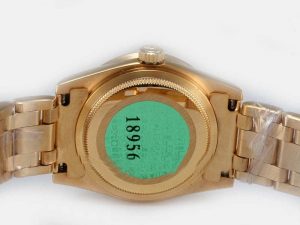
In addition, while the previous Explorer II had 20mm wide lugs, the updated 216570 has 21mm wide lugs to better match its larger case. While the larger Oyster case still offers users water resistance to 100 meters (330 feet), its increased size gives it a much greater overall presence on the wrist, immediately setting it apart from the many other Rolex models with 40 mm cases and making it the absolute largest model in the brand’s collection.
Probably the single most defining element of the Rolex Explorer II is its brushed stainless steel bezel, engraved with a black 24-hour scale. Unlike the 24-hour bezel of the GMT-Master, which rotates in both directions, the bezel on all Rolex Explorer II watches is fixed. However, with the exception of the first Explorer II, the independently adjustable hour hand on the watch can be used with the 24-hour bezel to display two different time zones at the same time.
While the first Explorer II was only available with a black dial, each subsequent model was available with either a black dial or a white “polar” dial – a trend that continues to this day. One difference between the black and white Explorer II 216570 dials, however, is that the white dial is treated to black around the applied markers, while the markers on the black dial retain their natural state of highly polished 18-carat white gold.
Aside from the larger case size, the most discussed aspect of the 216570 models is the return of the model’s large, bright orange, arrow-shaped 24-hour hand. Although fake Rolex occasionally acknowledges various design elements from its past, it has never made a vintage-inspired piece, which it is famous for. While the hour, minute, and seconds hands are essentially larger versions of those found on most Rolex replica sports watches, the 24-hour hand, number 216570, is the version found on the first Explorer II watches from the 1970s.
It is also worth noting that the hands on the white “Polar” dial are black-finished to match their black-finished hour markers, while the hands on the black dial are polished white gold and feature only a black-finished base, which gives them a “floating” appearance. Likewise, the bright orange 24-hour hands are not identical to the black and white dial versions of reference 216570. The hands mounted on the black dial model also feature a black-finished base section to match the similarly styled hour and minute hands.
The watch world is in an uproar today with the release of two new Explorer collections and a new Explorer II. Many speculated that the iconic Adventurer tool watch might be getting an upgrade since this year also marks the 50th anniversary of the Explorer II collection. However, this remained a mystery until this morning when Rolex unveiled their latest offering at the watch show. Surprisingly, the Explorer line features a two-tone finish and a reduced case size, while the Explorer II now features a 3285 movement and some aesthetic upgrades.
The Explorer is one of Rolex’s most underrated models. While the Submariner, GMT Master, and Daytona all have rotatable bezels and complications, the Explorer keeps it simple, with just a dial for the time and a sleek bezel. It is this elegant simplicity and versatility as an everyday watch that has attracted many collectors to the Explorer collection. 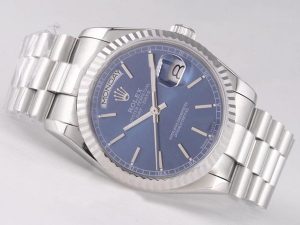
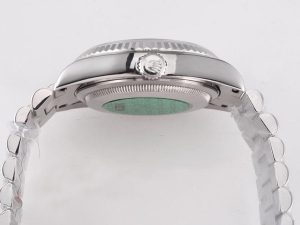
With the launch of the new collection comes the integration of the 3230 movements, which Rolex replica watches released in 2020. It features the brand’s patented Chronergy escapement with a more efficient skeletonized construction and antimagnetic nickel-phosphorus material. The movement also offers a larger power reserve of up to 70 hours and features the already proven Paramagnetic blue Parachrom hairspring and Paraflex shock absorber.
The infamous rugged mountaineer’s tool is shown in a slightly more sophisticated design featuring a polished gold bezel, crown, and center link. Gold also adorns the lacquered dial with gold-edged hour markers and gold hands. It also features a reduced 36mm case size and a 3230 perpetual movement.
While the Explorer was developed for mountaineering and another rugged terrain, the Explorer II’s niche lies in cave exploration and other adventures in dark environments where the wearer may not see daylight for days on end. Its signature features include a fixed 24-hour bezel and coordinating arrow hands on the dial that can be used to track the time in the morning and afternoon. Had the Explorer II been a newer model, the arrow hands would also have been separate, effectively turning it into a GMT watch that could track a second-time zone.
Only now, the case has been improved to feature slimmer and less chunky lugs, which we suspect may affect the overall fit of the watch. However, until we can get our hands on the watch itself, this remains unknown. The new lug design isn’t surprising, as fake Rolex seems to have adopted a slimmer profile in many of their new offerings.
Root beer reminds us of simpler times – the days of pouring drinks over ice cream instead of ice cubes. But we had to grow up somehow, and luckily for us, we got something just as sweet with the Rolex GMT Root Beer bezel.
Rolex first introduced the GMT-Master in 1954 in response to the aviation world’s need for a timepiece to help pilots and crew keep track of time while traveling across multiple time zones. The result is a sports watch that includes a 24-hour bezel that corresponds to the GMT hand on the dial to track two different time zones simultaneously. Since its release, the fake Rolex GMT-Master has grown into an impressive collection of replica watches worn by everyone from professional athletes and celebrities to pilots and military personnel.
Now, it may not be as satisfying as your childhood drink, but the Rolex Root Beer GMT is certainly a fun way to indulge in a luxury watch. With that in mind, it probably goes without saying that not everyone agrees. Some Rolex GMT-Master enthusiasts find it hard to accept the idea of a brown color going further than a leather strap. However, for those who prefer root Rolex beer bezels, these watches are a real treat. 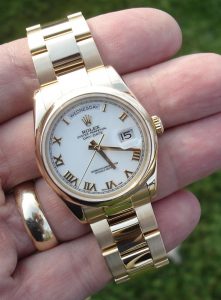
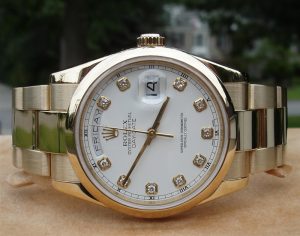
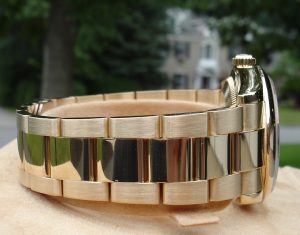
When Rolex released its updated Root Beer Bezel in 2018, it really reinvigorated collectors’ admiration for this unique timepiece. For starters, we hadn’t seen a Root Beer GMT in over a decade, and while it was never the most popular GMT model among collectors, it was appreciated for its unique aesthetic and the mark it left on the collection. So when Rolex replica reintroduced the Root Beer Bezel in 2018, many were shocked to see its return.
We know, the biggest and most notable upgrade to the bezel is the use of Rolex’s proprietary ceramic material, which the brand calls Cerachrom. Looking at some of the earlier root beer bezels made from aluminum, one can see that many of them had scratched and faded over the years. By using this new, incredibly durable, and fade-resistant ceramic material as the bezel, Rolex is able to ensure that these warm colors remain more or less indefinitely. The two-tone Root Beer bezel made of ceramic is also noteworthy because it is extremely difficult to manufacture. Rolex could have just gone with an all-brown Cerachrom bezel, so the effort to return to a two-tone bezel, but in more modern colors and materials, is certainly noteworthy.
The dial has also received a much-needed upgrade. Instead of a brown sunburst as before, the dial is glossy black with Everose gold markers applied and filled with a blue Chromalight luminous glow. It’s a watch that makes you smile, as brown is still an unlikely color to appear on a watch. However, the way it blends with the lacquered black dial and the warm 18K ever-rose gold makes it feel effortlessly stylish and modern.
Let’s say you’re in the market for a vintage Rolex watch and prefer to buy one that’s not been polished or at the very least, only lightly polished. How do you know what the seller is advertising is true? Although it’s difficult to know for certain, there are a few things you can examine.
Remember that it is quite rare to come across a vintage replica Rolex that has never been polished. Many owners dutifully sent their watches in for servicing and more likely than not, the watch underwent a polishing at some point or another during its history. It’s more realistic to look for vintage watches that were skillfully polished, complete with crisp edges and close-to-original silhouettes.
Some Rolex owners prefer not to polish their vintage watches to keep the original integrity of the watch but are perfectly fine with having modern watches polished to keep them looking as new as possible. It really is a matter of personal preference.
However, if you have a factory-original vintage Rolex that has never been polished, now is not the time to begin. It’s worth mentioning again that untouched Rolex watches are much more valuable within vintage collecting circles than restored ones. These timepieces may look beat up and worn out to the untrained eye but to passionate collectors of old watches, these are vintage beauties that are becoming harder to find in original condition.
It’s quite common for people trying to sell their Rolex replica watches to have them serviced, buffed, and polished first, thinking that they’ll get a better price because of it. Unfortunately, this can sometimes have the opposite effect on the value of the watch – not to mention the additional cost of the service and polishing itself.
If you’re looking to sell your pre-owned watch to Bob’s Watches, we always advise against having it polished beforehand. If it is a model that should be polished, we can always have it done on our end, but polishing the wrong vintage watch can take hundreds or even thousands of dollars off its resale price. Lastly, when it comes to your own personal watches, if you are unsure as to whether or not you want to have it polished, sometimes waiting till you’re sure is the best way to proceed. Remember, you can always have a watch polished, but you can never un-polish one.
While both collections offer a rich assortment designed to satisfy any and all tastes, the Planet Ocean stands out at the front. All in all, it comes in over a hundred different flavors, with four sizes, five different metals, five dial colors, and three complications.
However, while the luxury of the collection is undeniable, the significance of each model remains very clear. Even the smallest model in the collection has a noticeable heft to it, equipped with a significantly thicker case than the replica OMEGA Diver 300M model to cope with the pressure of a 600-meter water-resistance rating.
In terms of functionality, you can choose between a simple time and date model (which makes up the majority of the available models), a small number of GMT models, and a few chronograph models. The chronograph model is only available in the largest size, 45.5 mm, while the GMT model is only available in 43.5, but you can choose from a wide range of time and data models.
All in all, the OMEGA Planet Ocean collection manages to navigate between the ability to have an all-around sports model and the general bearing of a luxury model – all from a manufacturer that is at the top of its game.
Breitling’s Superocean line is a much purer collection than Omega’s. You won’t find any fancy new alloys or molten gold liquids here, and the chronographs with date functions are among the most complicated. You won’t even get a helium vent on every model, and only on those rated at 1000 meters and deeper.
While the engineering may not be as advanced as that of the Omega watches, the Superocean is amazingly talented. Overall, there’s nothing about the Breitling Superocean that feels subtle, but that’s exactly the point. These larger-than-life professional replica watches are aimed at people with outgoing personalities, and they do their job brilliantly.
We are one of the leading voices in the global luxury market, and the company has built a loyal readership of highly successful individuals united by a shared appreciation of quality, exclusivity, tradition, and fine design.
The blueprint for the modern dive watch, the Rolex Submariner is a timepiece that needs no introduction. First introduced in 1953 and a cornerstone of the Rolex catalog ever since, the Submariner is easily one of the world’s most iconic timepieces and is synonymous with the Rolex brand itself. 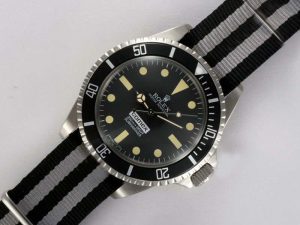

In 1969, Rolex introduced the first date display dive watch, the Ref. 1680, and like all previous iterations of the Submariner, the Ref. 1680, like all previous Submariner watches, was offered in stainless steel, but also in solid 18-carat gold, the first time the Rolex Submariner collection had been made in precious metal.
In addition to being the first solid gold Submariner, 1680 is also the first time that Rolex’s iconic dive watches have been available in a dial and bezel color other than black. While the Rolex Submariner was still largely considered a dedicated dive watch when the 1680 collection first appeared, this model marked the first time the Submariner began to move toward becoming the internationally recognized status symbol it is today.
This exclusive offering to one lucky Robb Report reader is a perfectly preserved 1977 Rolex Submariner Model 1680 in solid 18k yellow gold. The watch is completely unpolished and its original blue bezel insert and matching gold Oyster bracelet are in exceptional condition with little to no visible signs of wear.
As the first Rolex Submariner replica watches with a date display, the first to be crafted in solid gold, the first to introduce blue into the collection, and the only Submariner Date with an acrylic crystal, the Reference 1680 is a very important model in Rolex’s history and offers many surprises to collectors.
The Rolex submarine is already running on the ground, but even though it has captured the imagination of a wide range of admirers, there is still a lot of work to be done. Over the next six years, eight Rolex Submariners were released, some at the same time, and some with a few changes to each in order to refine the overall design.
After a turbulent first few years, the Submariner reached a certain level of consistency in 1959 when the Ref. 5512 appeared. With that model, all the components fell into place so effectively that the basic architecture of the model remained the same for the next half-century. 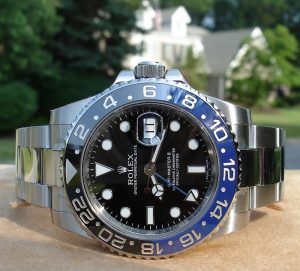
This model combines all the elements of the eight previous versions of the Submariner and brings them together for the first time. The Reference 5512 boasts a 40 mm case, Mercedes hands, full markers on a redesigned bezel, and the introduction of the most important previously unseen addition – the crown guard. In fact, everything you’ll find on a modern version of Rolex’s iconic dive watch starts here.
The result was so successful that there was essentially nothing left to do as far as the core aesthetics were concerned. Until the introduction of the Super Case in 2010, most of the major changes to the replica Rolex Submariner line were related to improved materials, updated movements, or minor design modifications.
However, there was one exception. With that in mind, they were not the only Submariner watches of that period. 1969 saw the release of the first Submariner with a date, the 1680 model, thus splitting the opinion of the Submariner line and the legions of watch enthusiasts.
Generally considered the first Submariner, although there is a debate, the Rolex Submariner was a hit and shares most of the same attributes as the Fifty Fathoms. The dial is black and features the same dots and batons as hour markers, with an inverted triangle at 12 o’clock that can be seen on current production models. All models are filled with a lot of luminescence (or radium in this era). The hands had not yet evolved to the Mercedes style found on most replica Rolex sports models today but were instead plain stick or pencil-shaped.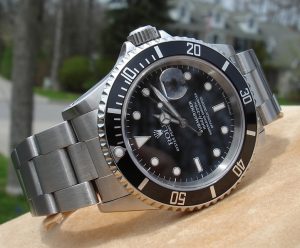
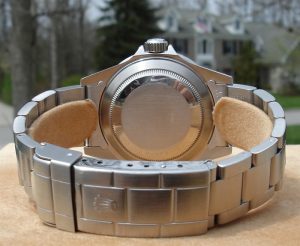
As for the bezel, it was marked with a 60-minute scale as usual but lacked the diagonal lines for the first 15 minutes. These markers were added in later versions to help the wearer keep more accurate track of the end of the dive when the precise time of the safety or decompression stop became more important. However, this watch also has an inevitable minor drawback.
Blancpain has a patent for a unidirectional bezel. The idea was the brainchild of the brand’s CEO, Jean-Jacques Fiechter, who was also an avid diver and serves as a basic failsafe. The unidirectional bezel ensures that in the event of accidental movement of the bezel underwater, it will only over-read the so-called underwater time, thus helping divers avoid the potential dangers of decompression sickness. Because the copyright belongs to Blancpain, the Submariner had to remain in use with a bidirectional bezel until the 1980s.
Rolex did, however, have the rights to an arguably more important innovation, which the brand extended specifically for the Submariner. From the mid-1920s onwards, part of the Oyster case construction was a special winding crown system fitted with a gasket that screwed into a tube inside the case. It provided impressive protection against moisture. But for the new dedicated diving model, it was clear that it had to be significantly improved.
The end result is the Twinlock crown, an arrangement that uses two sets of O-rings to create a pair of watertight seals within the winding stem assembly, making the Rolex Submariner replica the first dive watch to be water-resistant to 100 meters.

